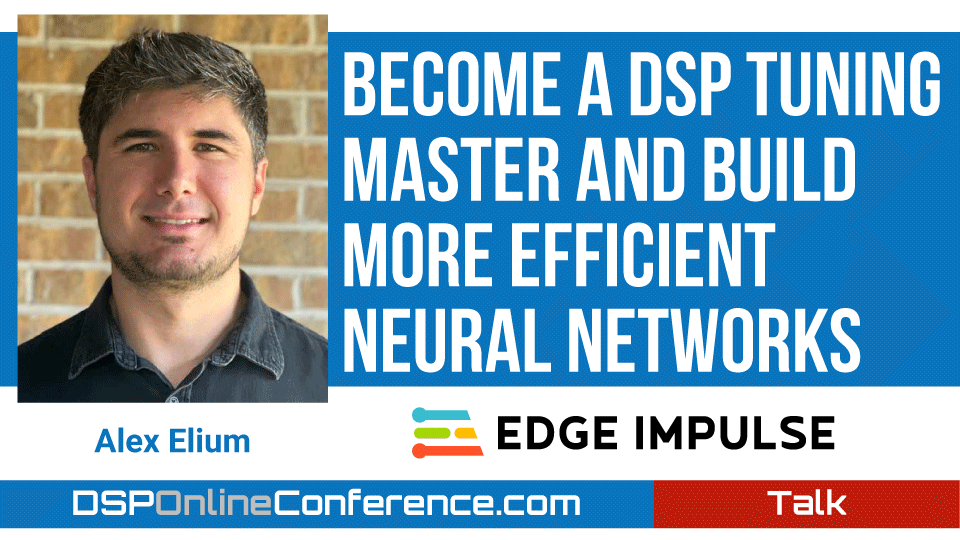Home > On-Demand Archives > Talks >
Become A DSP Tuning Master and Build More Efficient Neural Networks
Alex Elium - Edge Impulse - Watch Now - DSP Online Conference 2021 - Duration: 29:34

Sensor data is typically preprocessed with DSP in TinyML applications. As engineers deploy NNs on ever smaller processors, it is becoming necessary to tune DSP algorithms in order to fit within RAM or real-time processing constraints. But not all steps in a DSP pipeline are created equal! Knowing how to find sections to slim down can mean the difference between giving up a few percent of accuracy, and ending up with a model that’s no longer usable.
This presentation will show experimentation with DSP parameter choices (number of cepstral coefficients, spectrogram frame size, etc) for an example keyword spotting classifier, and analyze the RAM, latency, and accuracy impacts of various scenarios. Attendees will leave with ideas on where to find elusive kB of RAM and mS of latency next time they need to optimize a DSP pipeline.
That sounds very doable! I would recommend the MFE block over the MFCC one, as MFCC is more based on human vocal sounds and MFE is better for more generic sound.
Hello everyone, welcome! I'll be monitoring the questions now and will either answer with a comment for simple questions, or during the Q+A in about an hour for more lengthy responses. Enjoy!


Is it possible extract dogs noise and car noise in the open enviorments to counts dogs warning call